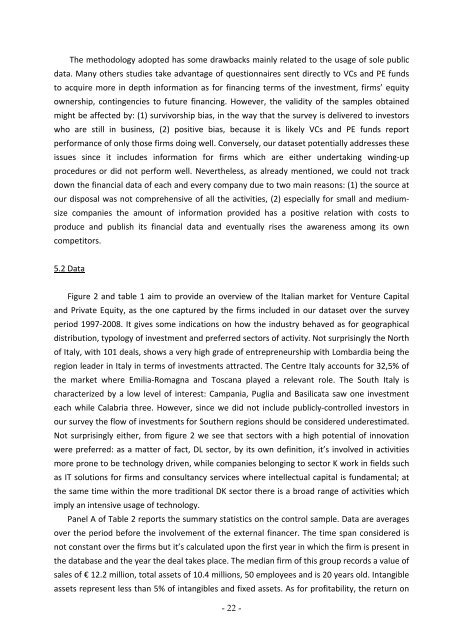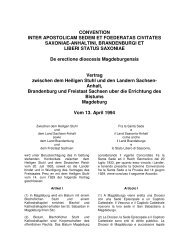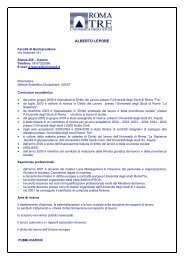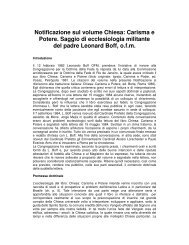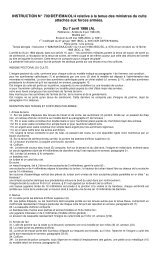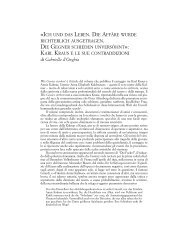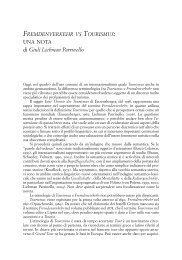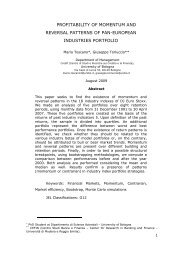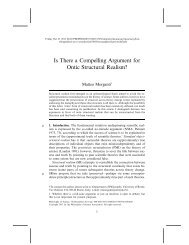Determinants and effects of Venture Capital and Private Equity ...
Determinants and effects of Venture Capital and Private Equity ...
Determinants and effects of Venture Capital and Private Equity ...
Create successful ePaper yourself
Turn your PDF publications into a flip-book with our unique Google optimized e-Paper software.
The methodology adopted has some drawbacks mainly related to the usage <strong>of</strong> sole public<br />
data. Many others studies take advantage <strong>of</strong> questionnaires sent directly to VCs <strong>and</strong> PE funds<br />
to acquire more in depth information as for financing terms <strong>of</strong> the investment, firms’ equity<br />
ownership, contingencies to future financing. However, the validity <strong>of</strong> the samples obtained<br />
might be affected by: (1) survivorship bias, in the way that the survey is delivered to investors<br />
who are still in business, (2) positive bias, because it is likely VCs <strong>and</strong> PE funds report<br />
performance <strong>of</strong> only those firms doing well. Conversely, our dataset potentially addresses these<br />
issues since it includes information for firms which are either undertaking winding‐up<br />
procedures or did not perform well. Nevertheless, as already mentioned, we could not track<br />
down the financial data <strong>of</strong> each <strong>and</strong> every company due to two main reasons: (1) the source at<br />
our disposal was not comprehensive <strong>of</strong> all the activities, (2) especially for small <strong>and</strong> medium‐<br />
size companies the amount <strong>of</strong> information provided has a positive relation with costs to<br />
produce <strong>and</strong> publish its financial data <strong>and</strong> eventually rises the awareness among its own<br />
competitors.<br />
5.2 Data<br />
Figure 2 <strong>and</strong> table 1 aim to provide an overview <strong>of</strong> the Italian market for <strong>Venture</strong> <strong>Capital</strong><br />
<strong>and</strong> <strong>Private</strong> <strong>Equity</strong>, as the one captured by the firms included in our dataset over the survey<br />
period 1997‐2008. It gives some indications on how the industry behaved as for geographical<br />
distribution, typology <strong>of</strong> investment <strong>and</strong> preferred sectors <strong>of</strong> activity. Not surprisingly the North<br />
<strong>of</strong> Italy, with 101 deals, shows a very high grade <strong>of</strong> entrepreneurship with Lombardia being the<br />
region leader in Italy in terms <strong>of</strong> investments attracted. The Centre Italy accounts for 32,5% <strong>of</strong><br />
the market where Emilia‐Romagna <strong>and</strong> Toscana played a relevant role. The South Italy is<br />
characterized by a low level <strong>of</strong> interest: Campania, Puglia <strong>and</strong> Basilicata saw one investment<br />
each while Calabria three. However, since we did not include publicly‐controlled investors in<br />
our survey the flow <strong>of</strong> investments for Southern regions should be considered underestimated.<br />
Not surprisingly either, from figure 2 we see that sectors with a high potential <strong>of</strong> innovation<br />
were preferred: as a matter <strong>of</strong> fact, DL sector, by its own definition, it’s involved in activities<br />
more prone to be technology driven, while companies belonging to sector K work in fields such<br />
as IT solutions for firms <strong>and</strong> consultancy services where intellectual capital is fundamental; at<br />
the same time within the more traditional DK sector there is a broad range <strong>of</strong> activities which<br />
imply an intensive usage <strong>of</strong> technology.<br />
Panel A <strong>of</strong> Table 2 reports the summary statistics on the control sample. Data are averages<br />
over the period before the involvement <strong>of</strong> the external financer. The time span considered is<br />
not constant over the firms but it’s calculated upon the first year in which the firm is present in<br />
the database <strong>and</strong> the year the deal takes place. The median firm <strong>of</strong> this group records a value <strong>of</strong><br />
sales <strong>of</strong> € 12.2 million, total assets <strong>of</strong> 10.4 millions, 50 employees <strong>and</strong> is 20 years old. Intangible<br />
assets represent less than 5% <strong>of</strong> intangibles <strong>and</strong> fixed assets. As for pr<strong>of</strong>itability, the return on<br />
- 22 -


